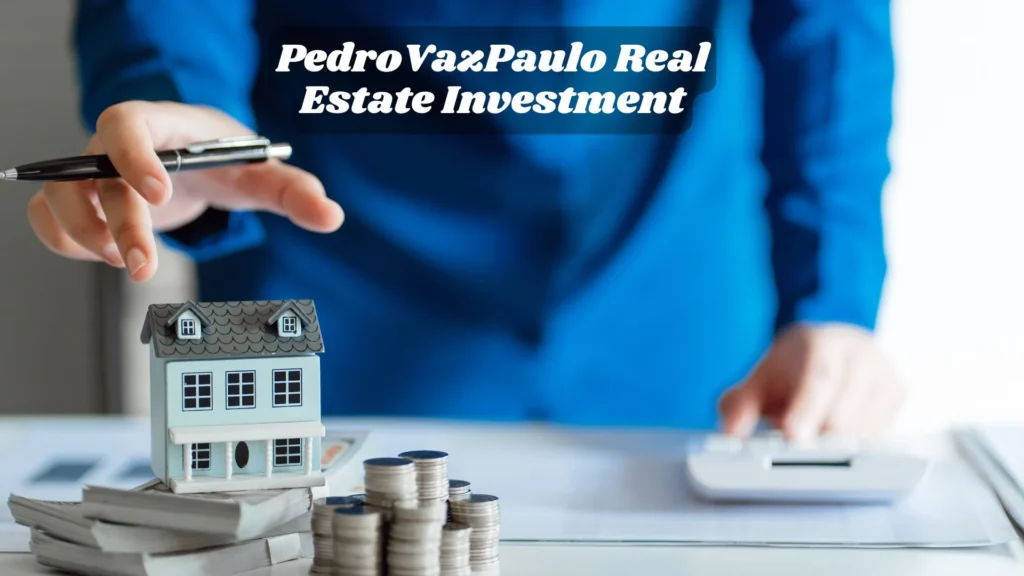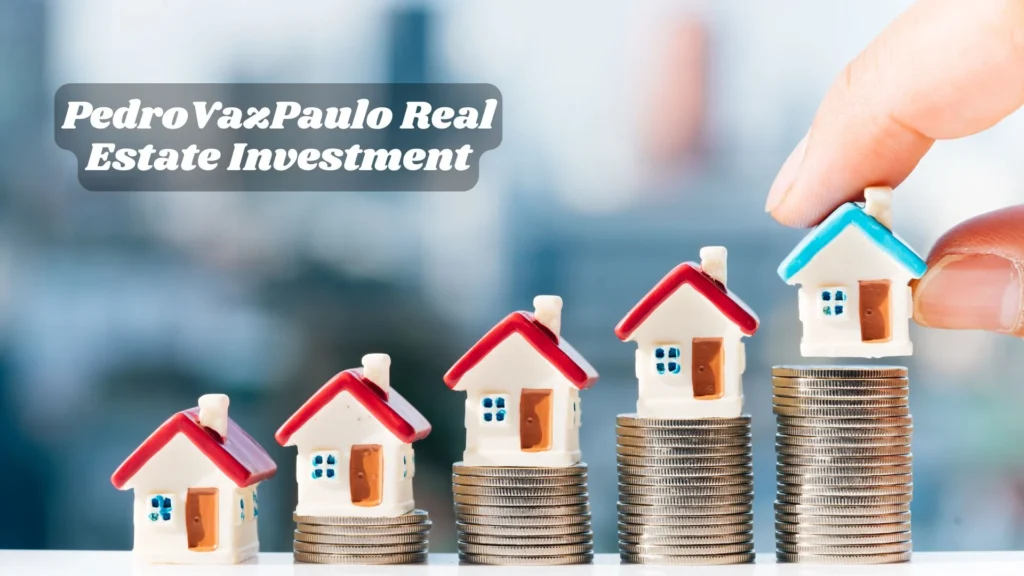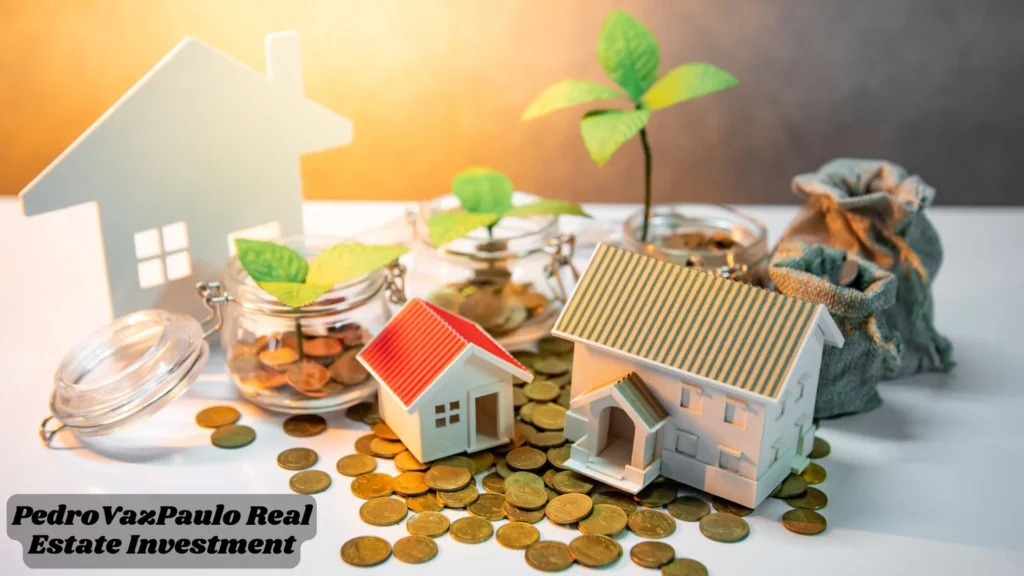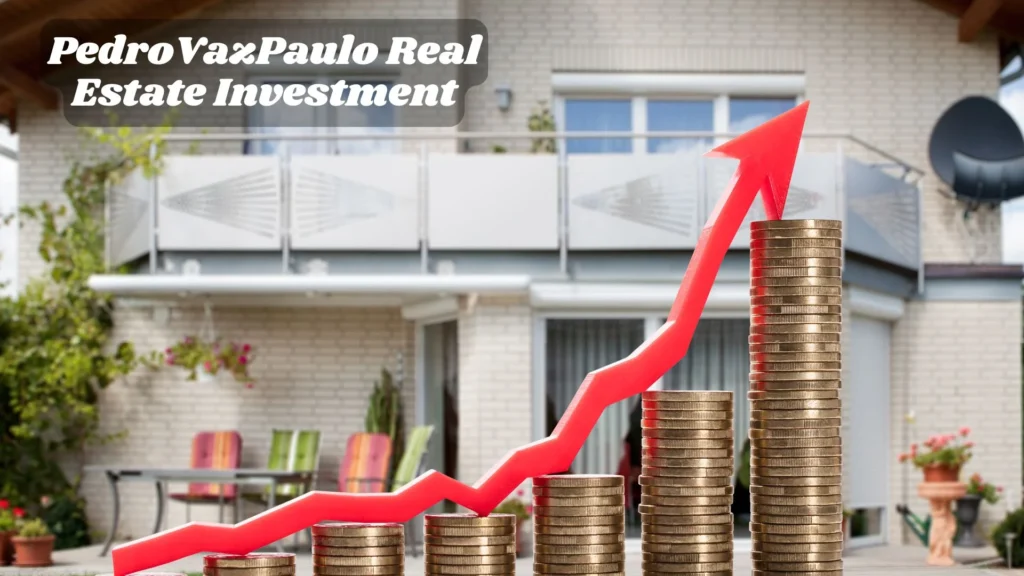PedroVazPaulo Real Estate Investment has evolved from a traditional wealth-building approach to a highly strategic discipline — and no one embodies this transformation better than PedroVazPaulo.
Known for his data-driven decision-making, diversified portfolio, and mastery of passive income, Pedro offers a practical blueprint for new and seasoned investors alike.
In this deep dive, we’ll break down his real estate investment strategy, explore how he identifies deals, manages risk, and scales his real estate portfolio — all while leveraging modern tools, analytics, and creative financing methods.
Who Is PedroVazPaulo? Background, Portfolio, and Influence

Real Estate Expertise and Track Record
PedroVazPaulo is a respected figure in the real estate market, recognized for investing across residential real estate, commercial spaces, and even industrial real estate in high-growth metro areas.
Since 2014, he has built a diversified portfolio exceeding $45 million in total property value.
His investments span multiple U.S. cities including Dallas, Charlotte, and Tampa — all selected based on market research involving population trends, job growth, and infrastructure development.
PedroVazPaulo Real Estate Investment Philosophy
Pedro’s approach is built around:
- Long-term value appreciation
- Consistent cash flow via rentals
- Using leverage wisely for portfolio growth
- Keeping overhead low with automated property management systems
As he puts it:
“Real estate should never be a gamble. If you understand the market, control your financing, and manage your risk, you’re building a financial fortress.”
Market Presence and Recognition
Pedro operates under his private LLC and collaborates with several syndication partners on real estate crowdfunding deals.
While not a social media personality, he’s been a guest on platforms like BiggerPockets and featured in investment newsletters like REI Wealth Monthly.
PedroVazPaulo’s Core Real Estate Investment Strategy

Buy-and-Hold Fundamentals
Pedro primarily uses a buy-and-hold strategy, allowing properties to appreciate over time while earning steady rental income.
Key benefits:
- Passive income accumulation
- Equity build-up through mortgage financing
- Long-term capital gains from rising property values
This model is ideal for creating generational wealth and acts as an inflation hedge.
Diversification Across Property Types
He balances investments across:
| Property Type | Risk Level | Income Potential | Pedro’s Allocation |
| Residential | Medium | High | 40% |
| Commercial | High | Very High | 25% |
| Industrial | Medium | Moderate | 15% |
| Raw Land | High | Variable | 10% |
| REITs | Low | Moderate | 10% |
This asset mix protects against real estate cycles while optimizing for both cash flow and capital appreciation.
Strategic Use of Leverage and Equity
Pedro leverages his capital via:
- 30-year fixed mortgages
- Private money lenders for flips
- Syndicate financing for large multifamily deals
He ensures deals pass the cash-on-cash return test of at least 8% annually, minimizing risk and maximizing velocity of capital.
Property Selection | How PedroVazPaulo Identifies Profitable Opportunities

Location Analysis and Economic Indicators
Pedro evaluates:
- Employment rates
- School district ratings
- Population growth
- Proximity to transit, hospitals, and retail hubs
His preferred tools:
- U.S. Census Bureau data
- Zillow Rent Index
- Local MLS & Redfin trends
- Infrastructure projects via municipal planning boards
Market Cycle Awareness
Understanding where a market stands is crucial.
Pedro monitors:
- Days on Market (DOM)
- Vacancy rates
- Absorption rates
- Price-to-rent ratios
He avoids overheated markets with low returns and prefers emerging metros poised for growth.
Value-Add and Rehab Projects
Pedro follows the BRRRR method:
- Buy undervalued properties
- Rehab for increased rentability
- Rent at market rates
- Refinance to pull out equity
- Repeat using the extracted funds
His average ROI on BRRRR deals: 18%+ annually
PedroVazPaulo Real Estate Investment Income Models | From Rental Cash Flow to Capital Gains

Rental Income and Property Management
Pedro earns consistent passive income from his 40+ doors, with average monthly gross rent per unit around $1,400.
His property management stack includes:
- AppFolio for rent collection and maintenance tracking
- Smart locks and remote access systems
- Turnover protocols to reduce vacancy days
He keeps tenant turnover below 12% annually, significantly reducing operational drag.
Passive Income via REITs and Crowdfunding
Pedro invests 10% of his portfolio in REITs and crowdfunding platforms like:
- Fundrise
- RealtyMogul
- CrowdStreet
This approach diversifies his exposure to large institutional-grade assets without direct involvement.
House Hacking and Short-Term Rentals
For newer investors, Pedro recommends house hacking — living in one unit and renting out the others.
Example:
- Duplex in Tampa: Bought for $290,000
- Lives in one unit, rents the other at $1,500/month
- Net monthly cost after mortgage = $400
He’s also explored Airbnb and VRBO in tourist-heavy areas, targeting income-generating properties with low off-season vacancy.
Financing Like a Pro | PedroVazPaulo’s Capital Strategy

Mortgage Structuring and Pre-Approval Process
Pedro always gets pre-approved before making offers. His criteria:
- 720+ credit score
- 20–25% down payment
- Debt-to-income ratio < 40%
He uses local credit unions and small portfolio lenders for flexibility.
Hard Money and Private Money Tactics
When flipping or rehabbing:
- Pedro uses hard money loans with 10–12% interest and 1–2 points upfront
- Loan-to-value (LTV) not above 70%
For fast closings, he taps into a private lender network that funds within 7 days.
Equity Accumulation and Reinvestment Cycles
Equity snowballs over time:
| Year | Equity Gained | Properties Acquired | Net Cash Flow |
| 1 | $35,000 | 2 | $1,200/month |
| 3 | $110,000 | 5 | $3,600/month |
| 5 | $275,000 | 9 | $7,200/month |
Pedro refinances every 2–3 years and rolls gains into new properties or syndicated deals.
Risk Management and Exit Planning in PedroVazPaulo Portfolio

Risk-Adjusted Returns and Vacancy Control
Pedro maintains:
- Emergency fund covering 6 months of expenses
- Property reserves of $300–$500/unit
- Vacancy buffer of 5% in financial models
His worst-performing property still nets a 5.4% cap rate, proving strong risk-adjusted returns.
Inflation Hedge Strategy Using Real Estate
As inflation rises, so do rent prices — preserving Pedro’s purchasing power.
For example:
- 3-bed in Charlotte rented for $1,200/month in 2020
- Now commands $1,675/month
- That’s a 39% increase in 4 years, easily outpacing inflation
Exit Strategy Models
Pedro plans for three types of exits:
- 1031 Exchanges to defer taxes
- Cash-out refinance to unlock capital without selling
- Full sale during peak market conditions (target: 15%+ appreciation)
PedroVazPaulo Real Estate Investment Tools, Metrics, and Data-Driven Decisions
Real Estate Market Research Tools
Pedro relies on:
- Roofstock for turnkey single-family rentals
- Mashvisor for short-term rental data
- BiggerPockets calculators
- Local government GIS databases for zoning research
ROI, Cash-on-Cash, and Cap Rate Calculators
He evaluates:
- Cap Rate (target: >6%)
- Cash-on-Cash Return (target: >8%)
- Gross Rent Multiplier (target: <10)
Before buying, he stress-tests scenarios using Rentometer and internal spreadsheet models.
Syndication and Investor Platforms
Pedro syndicates with partners when:
- Deal size > $1.5M
- Requires pooled capital for down payment and rehab
His syndication process:
- Legal via SEC Reg D filings
- PPM created with real estate attorney
- Returns modeled on preferred equity structures
How to Start Real Estate Investing Like PedroVazPaulo Real Estate Investment

Building Your First Real Estate Portfolio
Start with:
- One duplex or triplex
- Use FHA loan (3.5% down) if living in one unit
- Rent out the rest for house hacking benefits
Setting Investment Goals and Risk Appetite
Ask:
- Do I want monthly income or long-term appreciation?
- What’s my acceptable level of risk?
- How hands-on am I willing to be?
This clarity shapes your investment roadmap.
Scaling to Multiple Properties
Pedro suggests:
- Reinvest all cash flow for first 3–5 years
- Build a team: realtor, lender, property manager, contractor
- Set up an LLC and separate bank accounts
Focus on systems before volume.
Frequently Asked Questions About PedroVazPaulo and Real Estate Investing
- What makes PedroVazPaulo’s approach different?
His strategy combines long-term fundamentals with modern tools and a keen eye on real estate cycles. - Can beginners follow this model?
Yes — especially through house hacking, REITs, or turnkey properties. - How much capital do I need to start?
As little as $10,000–$20,000 if using creative financing or owner-occupied loans. - Is real estate still a good hedge in 2025?
Absolutely. Rising rents and limited housing supply keep real estate a strong inflation hedge. - What’s Pedro’s biggest tip?
“Treat real estate like a business, not a hobby. Know your numbers, and always buy based on facts, not feelings.”
Final Thoughts | Can You Replicate PedroVazPaulo’s Real Estate Success?
PedroVazPaulo Real Estate Investment path is accessible, but not effortless. His real estate investment success comes from deep research, disciplined financing, and bold execution.
Whether you’re starting with one rental or building a diversified portfolio, the principles remain: know your market, manage risk, and let the numbers guide you.

Staphine Cross is a passionate American author known for weaving emotion, resilience, and raw honesty into every story she tells. With a deep love for literature and human psychology, her writing captures the complexity of life, relationships, and personal transformation.
Born and raised in Seattle, Washington, Staphine pursued her studies in Creative Writing and Sociology, blending both disciplines to create stories that touch the heart and challenge the mind. Whether it’s fiction that dives into inner battles or essays that question societal norms, her voice stands out as authentic, bold, and beautifully crafted.
Beyond the page, she is a fierce advocate for mental health awareness and women’s empowerment, often speaking at writing workshops and literary events across the U.S. When she’s not writing, Staphine enjoys quiet evenings with her journal, herbal tea, and a bookshelf full of classics.
Her popular works include:
-
“Beneath Quiet Skies” – a reflective novel about healing and second chances.
-
“Letters I Never Sent” – a heartfelt collection of emotional essays.
-
“The Echo Between Us” – a gripping story of love, loss, and rediscovery.



